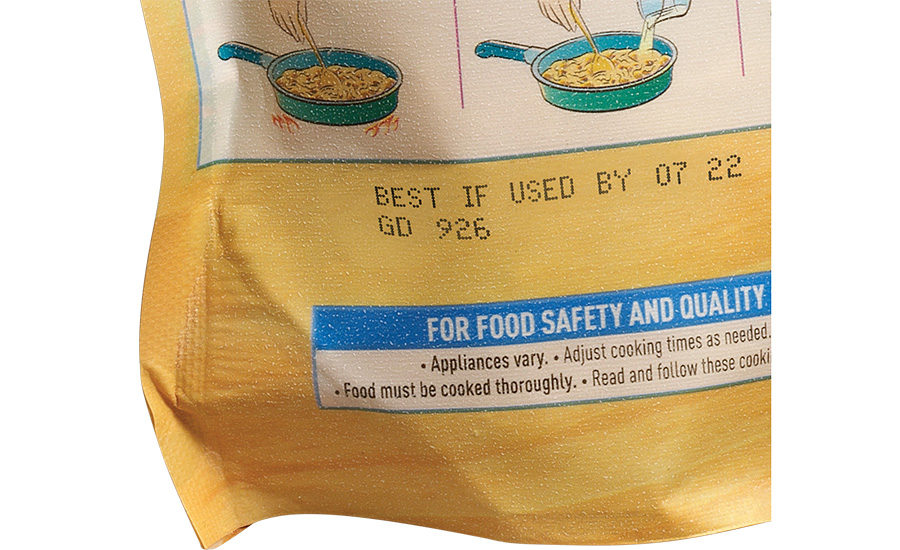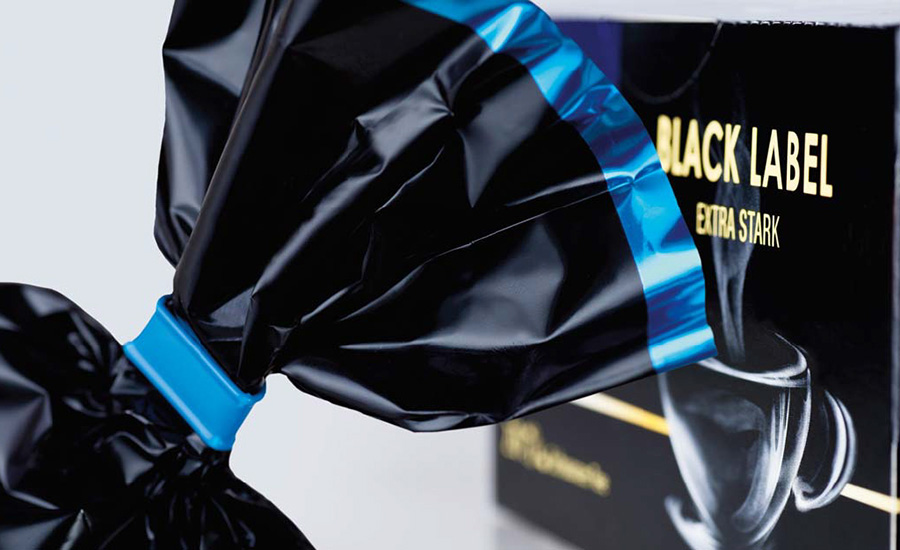As the packaging industry continues to grow in order to keep up with the boom in e-commerce, so too does the market for packaging inks. And, like everything in the industry, there are efforts to improve sustainability but still meet functional needs and consumer safety requirements. The trends impacting packaging overall affect inks. These trends are very apparent in food and beverage packaging, so we spoke with Orion Engineered Carbons' Sandra Niewiem, Videojet's Sherry Washburn and INX International's Jim Garvey to get more insight.

Photos courtesy of Orion Engineered Carbons, Videojet, and INX International Ink Co.
“We see three key trends,” says Sandra Niewiem, PhD, senior vice president of global specialty carbon black and EMEA region for Orion Engineered Carbons. “First, packaging inks are still a growing market segment globally, as packaged goods and packaged food and beverages, in particular, are more secure to transport and have a longer shelf life. The packaging also is a barrier against environmental effects such as moisture, temperature and dust.
“Second, differentiation of packaging is growing as brand owners compete to catch the eyes of consumers at the point of sale. This is especially important for flexible processes, such as inkjet, which are a faster growing market than conventional printing.
“The third trend is a shift from larger issues of printed publications to digital and particularly individualized and special-edition printing products. As a result, demand or printing inks may decline but demand for high-quality inks may increase.”
Videojet’s Business Unit Manager Sherry Washburn has also seen an uptick in manufacturers doing even more to help their packaging stand out on shelf. “Food manufacturers are selecting more inks and fluids designed and manufactured to maximize contrast, adhesion and uptime while meeting global safety, environmental and regulatory requirements. Requirements for MEK-free, acetone-free and low-odor are driving many food manufacturers’ decisions about inks on their food packaging.”
Messages on food-related products are some of the most important. “Inks are a mandatory part of almost every packaging,” Niewiem says. “Often part of the packaging design, they also must convey such important information as the ingredient list, ‘best before’ date, manufacturer’s info and other information printed on the outside or inside of the packaging.”
“For the direct printing of best-by dates, lot codes and other product information on food packaging, ink options include food-grade, color change (thermochromic for retort), high adhesion for flexible packaging, high contrast, fast drying and ultraviolet,” says Videojet’s Washburn. “An experienced ink supplier will help to match the ideal ink to a food manufacturer’s product, line speed and environment. In the U.S., inks that will intentionally come into contact with food must be a food grade. This means the ink’s ingredients must be allowed food additives as identified by the FDA.”

Photo courtesy of Videojet
Specialty carbon blacks are sometimes used. These raw materials are used in coatings, polymers, batteries and more. Different shades and performance characteristics can be created to provide the end-use characteristics desired.
“Carbon black is a soft pigment,” says Washburn. “Like all pigments, it does not dissolve in solvents. This property provides transfer and solvent resistance when used in coding and marking inks. It is selected to help avoid ink transfer and offset, sometime called ghosting, when there will be a significant amount of package-to-package contact during the product’s lifecycle.”
Niewiem adds, “Specialty carbon blacks give us the ability to create custom solutions for specific applications. They are used in flexographic, gravure and sheetfed printing inks for packaging. They have tailored particle designs to give black inks their color, and also to adjust rheology, gloss, ink stability and drying/curing speed. Carbon black grades for food packaging must comply with the purity requirements of relevant U.S. FDA (Food & Drug Administration) and European food packaging regulations.”

Photo courtesy of Orion Engineered Carbons
Because the difficulty removing carbon black on certain substrates, such as paper or porous materials, it can have security applications as well. “Carbon black contributes in regard to purity and excellent fastness against chemicals, light and temperature,” says Niewiem. “This purity and fastness minimize the possible migration of potentially hazardous substances into the packaged good. The conductivity of certain carbon black products can also play a role in brand protection concepts of high-end packaging solutions.”
With consumer demand for sustainability in the products they buy continuing, the inks used in the packaging need to follow suit. One way that food manufacturers can improve the sustainability of their packaging involves collaboration. “Food manufacturers can reduce the use of certain solvents, such as MEK and methanol, by working with their ink suppliers to choose inks with alternative solvents like ethanol, acetone and water,” says Washburn. “Many non-MEK alternative inks use less makeup fluid during operation and therefore emit less VOC emissions and generate less packaging waste than their MEK equivalents.”
Another option is to increase the use of bio-based products. For example, Orion is preparing to launch a new renewable resource carbon black tailored for printing inks. It’s also working on initiatives to reduce its carbon footprint and to include recycled raw materials in its sourcing.
Recently, HAVI, which provides support for foodservice brands, began recommending EcoPlata, part of the Botanical line of inks from Sakata INX, and INXhrc from INX International. Both products were developed utilizing plant-derived and bio-renewable ingredients, and they are designed to offer the same performance, quality and printability as conventional inks.
HAVI reached out to INX with the goal of making the packaging its customers used more environmentally friendly. Inks are the second-largest component used in packaging after the substrate. Since HAVI’s customers had already been moving to more natural substrates, inks were the next logical step, which led to the birth of the INXhrc and Botanical products.
“Botanical and INXhrc products offer brand owners the comfort of knowing the products have been formulated to be safe for use on food packaging while avoiding allergens, chemicals of high concern, fluorochemicals and many others that still find their way onto food packaging,” says Jim Garvey, technical manager for INX International Ink Co. “In addition, every product has been carefully tested across a wide array of scenarios specific to each package the ink will go on. This affords peace of mind so their customers are not only getting an eco-conscious ink, but also one that will hold up to today's demands without fear of defect.”

